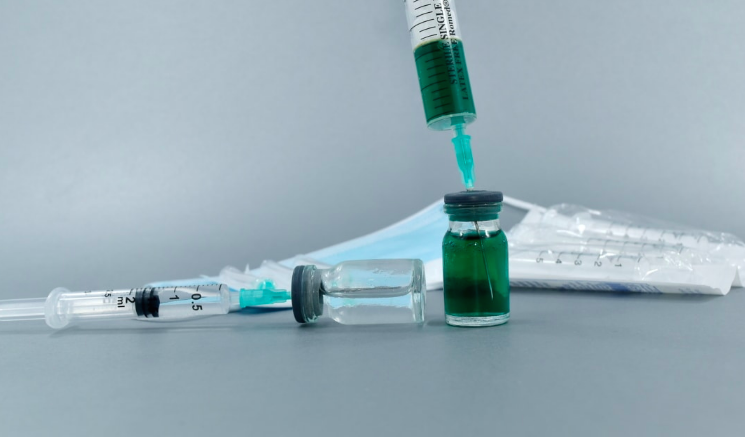Justin Kipness is a senior planning to study biology at Brown University in the fall. Each week, he will trace the coronavirus pandemic from its origin in Wuhan, China all the way to Stamford, CT. See Part 1, Part 2, Part 3, Part 4, Part 5, Part 6, and Part 7 to learn how we got here.
Antibodies are created naturally in order to protect the body against foreign invaders. What if scientists were able to harness the power of antibodies in order to create treatments for COVID-19? There are currently three known ways in which researchers can harness the power of antibodies; vaccines, convalescent plasma and pharmaceutically produced antibodies. While the potential for many of these treatments seems promising, it is important to recognize that no treatment is proven effective and safe until taken through extensive clinical trials.
Moderna, Inc. Headquarters, Cambridge Massacuchettes, U.S.A. (42.4 N, -71.1 E)
When thinking about Cambridge, Massachusetts the thought of prestigious universities such as MIT and Harvard University come to mind. However, there is also an “up-and-coming” biotechnology sector. Due to the multitude of biotechnology startups, it only seems logical that the next location of our story takes us to one of the hearts of innovation.
Moderna, Inc. is in the process of developing a messenger RNA (mRNA) vaccine. This type of vaccine has never been used to prevent a disease before, but it is a new and interesting technology worth discussing. Before looking into how mRNA vaccines work, it is important to understand the biology behind commonly-used vaccines.
Traditional vaccines use dead or attenuated (weakened) viruses to trigger an immune response. When this modified virus enters the body, it is recognized by immune cells such as T and B lymphocytes. B lymphocytes are important immune cells that differentiate into antibody-secreting plasma cells. If we think about the SARS-CoV-2’s spike protein as a “key” (as discussed in Part 2) and ACE2 as the “lock,” we can think of antibodies as a “key cover” that inhibits the “key” from opening the “lock” and entering the cell (in actuality, these interactions are governed by electrostatic forces such as hydrogen bonding between receptors). The part of the virus’s spike protein (key) that the antibody directly binds to is termed the epitope. In order for the antibody to bind to the epitope, it must interact physically and chemically with it.
How can the body produce an exact fit? Does it recognize the antigen, a foreign particle such as the spike protein, and then create a perfect match? Although this might seem ideal, evolution does not create perfection. How could the body produce an antibody to deactivate the virus if nothing can recognize it in the first place?
The body actually produces a vast number of antibodies with distinct shapes. When B cells (B lymphocytes) are developed in the bone marrow, DNA segments are shuffled, which leads to B cells producing unique antibodies. When a virus enters the body, B cells with the antibody that recognize the specific antigen will replicate to form plasma-secreting cells and memory cells. Plasma-secreting cells will release antibodies to deactivate the virus. Memory cells will recognize the pathogen if again exposed and help elicit a faster immune response.
When you are vaccinated, your body has already created memory for the antigen, protecting you from getting reinfected. One problem with common vaccines, however, is the long period it takes to develop and manufacture them on a large scale.
In the Moderna Vaccine Day Presentation, the biotechnology startup explains how an mRNA vaccine works. They begin the presentation by explaining the “central dogma of molecular biology.” This principle is that DNA is transcribed to mRNA, which is then translated to proteins. The presentation then describes current types of vaccines. Live attenuated vaccines are “the closest to actual infection and therefore elicit good, strong, long-lasting immune responses.” However, these vaccines require strict storage in addition to biosafety measures, and many of these vaccines cannot be used in people who have suppressed immune systems. Non-live vaccines elicit a poorer response, and people often need several doses of the vaccine in order for it to be effective. When discussing mRNA vaccines, the presentation says that these vaccines “require smaller doses and do not need special delivery devices.” How do these promising sounding vaccines work?
The Moderna Vaccine Day Presentation provides an excellent graphic that describes this process. Essentially, mRNA that codes for viral proteins are put into lipid nanoparticles (LNP). You can think of the LNP as a mail envelope and the mRNA as the mail – the LNP allows the mRNA to get transported. These LNPs are in the vaccine, and when they enter the body, they are engulfed by a certain type of cell called an antigen presenting cell. In the antigen presenting cell, the mRNA is translated into epitope proteins of the virus at a location in the cell called a ribosome. These cells produce the epitope as antigens on their surface, and then T and B cells can interact with these antigens. This interaction causes differentiation of immune cells, which leads to memory towards that antigen. Therefore, the body is prepared for infection from the virus containing that epitope and can quickly produce antibodies against it. If this works, mRNA vaccines could revolutionize medicine and help researchers develop vaccines more quickly for new emerging viruses.
Although Moderna’s mRNA vaccine is an innovative idea, some critics have said that the company overstated their results. According to CNN, “just hours after revealing the promising vaccine results, Moderna (MRNA) sold 17.6 million shares to the public,” and that “two of Moderna’s top executives also cashed in on the boom at their company.” Former officials from the U.S. Securities and Exchange Commission said that what Moderna did seems “highly problematic.” However, business issues with one particularly company does not take away from the fact that mRNA vaccines in general can help pave a new future in medicine.
Sorrento Therapeutics Headquarters, San Diego, California, U.S.A. (32.7 N, -117.2 E)
If vaccines work by allowing the body to recognize an antigen and generate antibodies quicker for future infections, what if scientists could use antibodies directly? This is the idea behind convalescent plasma therapy. According to the Mayo Clinic, convalescent plasma is “the blood from people who’ve recovered” from a disease. Convalescent plasma from recovered COVID-19 patients have naturally occurring antibodies in their blood that can inactivate SARS-CoV-2.
According to the Mayo Clinic, “researchers hope that convalescent plasma can be given to people with severe COVID-19 to boost their ability to fight the virus.” Although this therapy seems promising, are there enough people who have been infected with COVID-19 able and willing to donate blood, and are there even enough antibodies in the global blood supply? What if there was a way to create and manufacture these antibodies?
This is the aim of another group of biotechnology companies, one among them being Sorrento Therapeutics. In a statement on May 15, the biotechnology company describes their antibody cocktail. Sorrento Therapeutics found one dozen antibodies that blocked a part of the spike protein, called the S1 subunit, from interacting with ACE2 and binding to the cell.
The company tested these antibodies in an in vitro study, which means it was done using lab equipment rather than performed in live animals, and observed antibodies that seemed to neutralize SARS-CoV-2. According to Sorrento Therapeutics, “among the antibodies showing neutralizing activity, one antibody stood out for its ability to completely block SARS-CoV-2 infection of healthy cells in the experiments.” This antibody was called STI-1499 and was shown to “completely neutralize the virus infectivity at a very low antibody dose.” Due to this promising result, that antibody will likely be further tested and possibly developed.
According to Sorrento Therapeutics, “STI-1499 will likely be the first antibody in the antibody cocktail (COVI-SHIELD ™) it is developing, as recently announced. STI-1499 is also expected to be developed as a stand-alone therapy, (COVI-GUARD ™) because of the high potency it has exhibited in experiments to date.”
The first steps of the antibody race are discovery, testing and approval. After these barriers are surmounted comes another big challenge: manufacturing. Currently, the facilities of Sorrento Therapeutics can only develop 200,000 doses per month; however, the company is looking for other ways to increase their production capacity. Their potential goal is to create “tens of millions of doses in a short period of time to meet the vast projected demand.” This may mean teaming up with other biotechnology companies or investing in new facilities.
It will be interesting to see how antibodies can be manufactured into drugs for this pandemic as well as future outbreaks. Using computer technology, researchers may be able to predict new emerging viruses and use this information to develop potential drugs before the emergence of a new outbreak. Vaccines and antibody-based therapies are helpful in fighting off the virus. However, other treatments are being developed and investigated to help treat some of the adverse effects caused by the cytokine storm, discussed in Part 7. These types of treatments will be discussed in the next and last part of this series.





